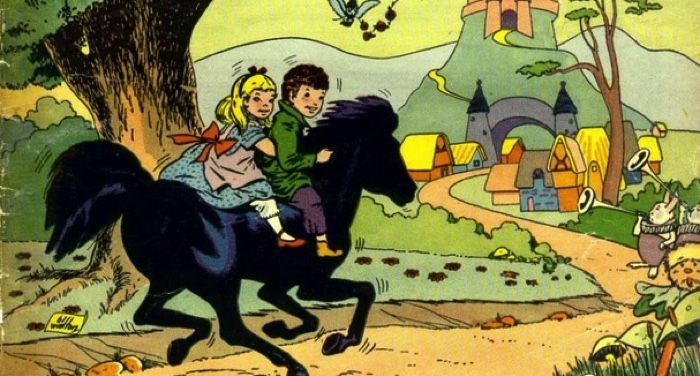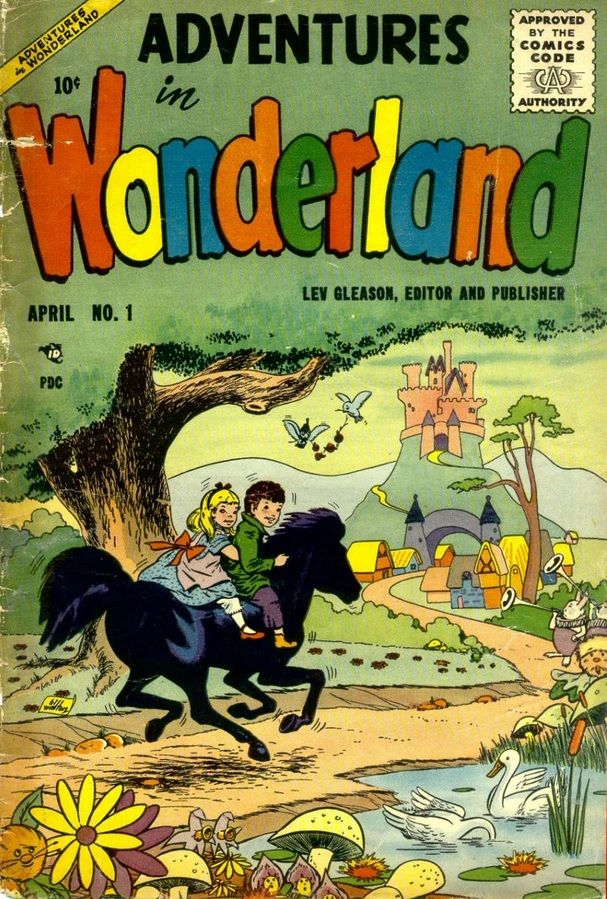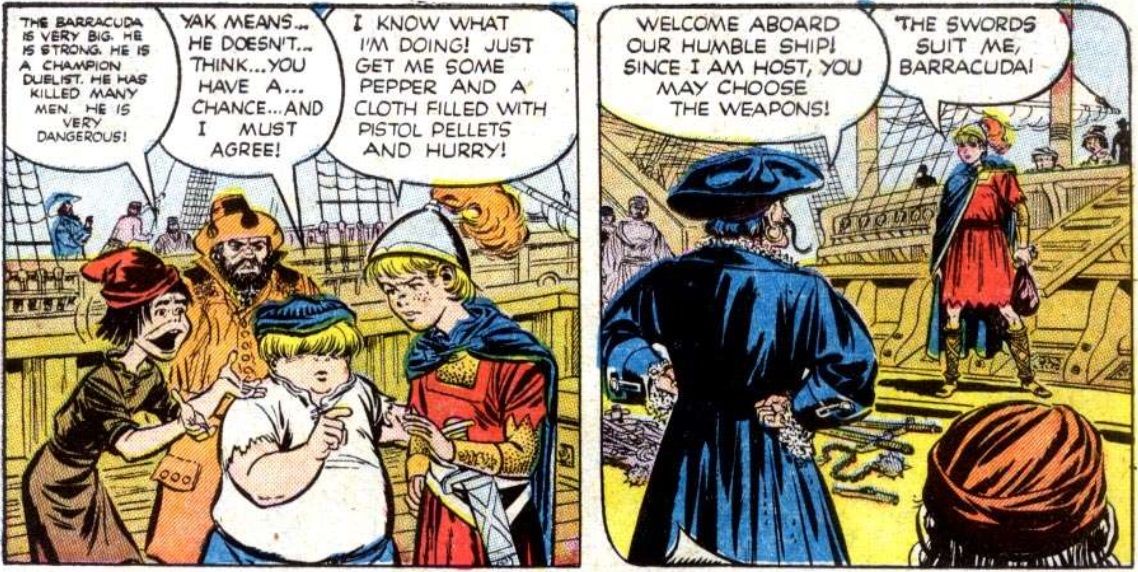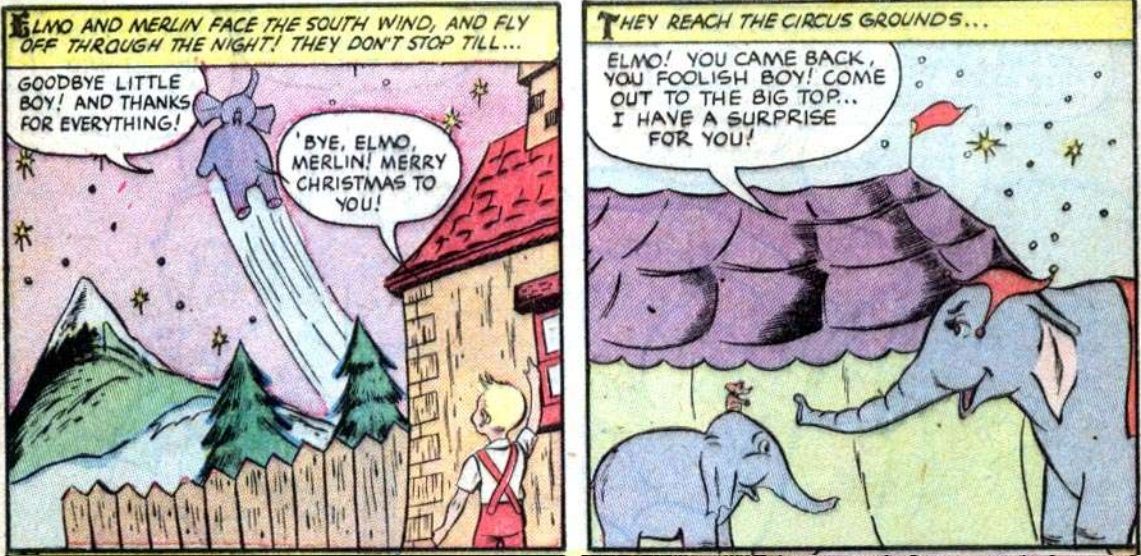
Retro Comics: Adventures in Wonderland
Some comics go down in history as masterful examples of the craft and are beloved by multiple generations. And others end up at the landfill. In this series, I’ll be looking back on some forgotten series to better understand what kind of comics our ancestral nerds were reading in the days of rotary phones and record players.
Today’s subject: Adventures in Wonderland!

The Context
As usual with ’50s comics, it all comes down to the Comics Code Authority. The publisher, Lev Gleason Publications, had made their name with violent superhero comics like Daredevil (not that one) and crime comics like Crime Does Not Pay.
But by 1955, those types of titles were coming under heavy fire from religious leaders and the federal government. The Senate convened special hearings to determine if comics needed to be federally regulated. I assume Gleason started this most innocent of titles to get the moral guardians and fear-mongers off his back.
Adventures in Wonderland lasted just five issues, so you can guess how well that went.
The Creators
I’ve already talked a bit about the publisher, but who were the actual creators behind this title?
As an anthology-style title, we get stories by lots of different creators, most of whom are genuinely talented. I was surprised by how good the art was, honestly. We get work from Bob Fujitani, whom we last met on Hangman Comics. It also features art by Dick Rockwell (yes, they are related) and Myron Fass, who had his own, short-lived publishing company in the mid-’60s and tried to sue Marvel for stealing a character name that they’d both stolen from Fawcett.
The Comic
I picked this one assuming it had something to do with the Lewis Carroll book. It does not.
Most of the stories are fairy tales with talking animals, knights, and so on. Four out of five issues feature a story with a character named Peter Pester, a young boy who serves as the royal baker for the kingdom of Gladiola. He goes on some surprising adventures for a baker, like swapping places with a knight to go fight pirates. He is joined by his incredibly annoying friends, who talk like they’re the Super Dictionary.

Again, I was surprised by how not bad these stories were. They’re hardly going to win awards, but it’s cute and fun.
The other stories tends to follow typical fairy tale formulas: there’s a lot of foolish kings (who all look the same, somehow) learning valuable lessons, and abused poor folk who gain wealth and happiness by being nice (or bland). In one depressing story from Issue 2, “The Prince and Penelope,” Penelope falls in love, is tricked into thinking the prince doesn’t love her back, hallucinates the prince, falls into a river, is presumed dead, gets rescued, marries her rescuer, has a kid, and stays hidden for 10 years. The prince conveniently finds her again after she is widowed, and they all (finally) live happily ever after!
The quality drops in the last two issues, with the artwork and lettering getting noticeably worse. The stories wander from the fairy tale theme, too, taking place in what was then the modern day. Issue 5 is a Christmas special with stories that I can only describe as “A Christmas Carol but worse” and “Rip-Off Dumbo Learns About Christmas.”

And yet, Lev Gleason Publications was sunk by the general anti-comics backlash, not by Disney’s lawyers.
The Legacy
I mostly wanted to read Adventures in Wonderland because it seemed cheerful, and the past couple of titles I’ve covered have been…not.
I don’t have much to say about this one, to be honest. The first three issues are pleasant enough, if you’re into fairy tales. Like I said, the art is very nice. Except for some of the Peter Pester stuff, it all feels generic, though, which is probably why this title doesn’t appear to have had any sort of impact on comic books. A UK publisher, L. Miller & Son (which later changed its name for, um, reasons) did reprint some of the stories in 1956, but that didn’t last long.
Even if this isn’t my kind of comic, it’s still interesting to see just how sanitized the medium became in the mid-’50s. We went from dark, ultra-violent stories like Hangman Comics to cute but trite tales like these. There’s no risk-taking, no out-of-the-box thinking, but that’s what comics had to do to survive the decade.
Even then, it wasn’t enough for publishers like Lev Gleason, who couldn’t stay afloat selling the types of kiddie comics that puritanical adults wanted them to.
Want more vintage goodness? Check out previous editions of RCR: Race for the Moon, Stamps Comics, Tippy Teen, Winnie Winkle, Hangman Comics, and G.I. in Battle!










